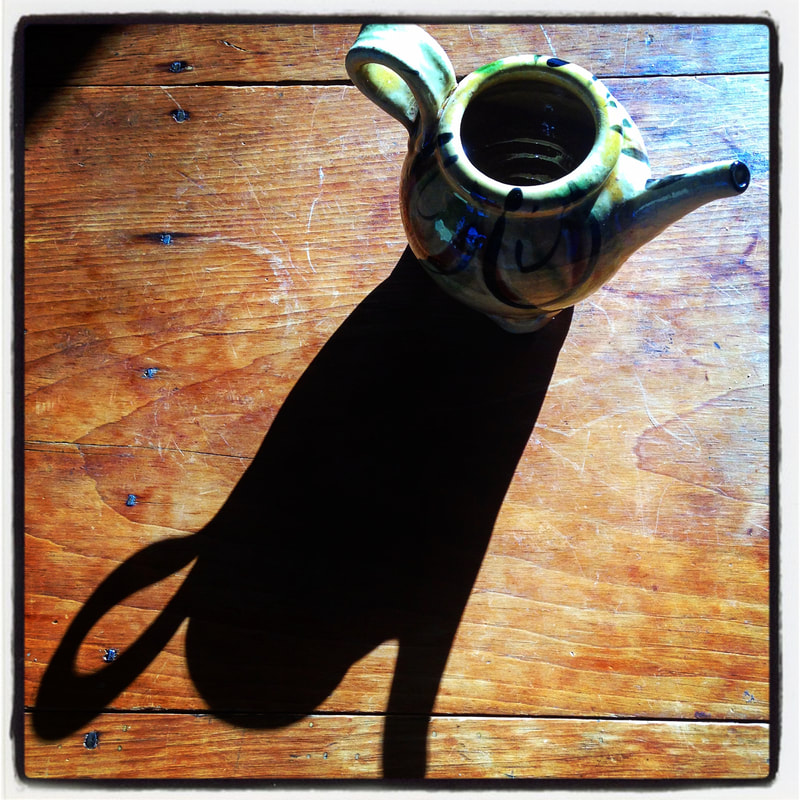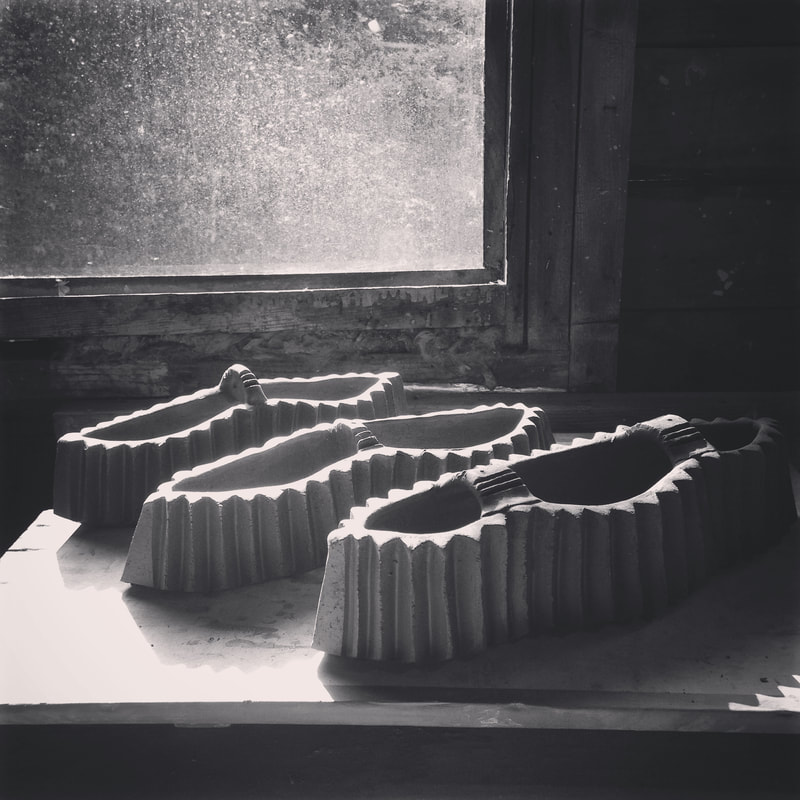ABOUT LISA BUCK
I grew up in a household that valued working with your hands; “creating something out of nothing” my mother would say, and I find great pleasure in the routine, rhythm and physical work of making pots. Following in the long tradition of studio and folk potters, I passionately pursue the good individual pot that comes from working in a series of related forms over time.
An inveterate arranger, I see the world around me through the lens of composition and relationships, where visual components interact with each other to create a pleasing whole. The process of arranging and looking, fussing and moving is how I approach making pots. As I turn my lens on the clay components, I work to create a balance between the honest, yet sometimes unmannered lines of construction, and the more formal considerations necessary in developing functional organic forms that are expressed with generosity. My pots are thrown, altered, hand built or carved, using whatever technique will best express a particular idea.
Working with a limited palette of color, I predominantly use red terra sigillata and amber glaze over white slip, as well as terra sigillata. Black, white, green or turquoise may accent and bridge the interior and exterior surfaces, often in the form of dots or lines. Most of my pots are fired in an electric kiln to Cone 04-02, around 1940-1960 degrees. On occasion, I have the opportunity to explore the surfaces produced in a soda kiln, which is a real treat.
The colors I choose to work with, including the rich red of the earthenware clay, touch me deeply and hopefully, convey the connection I feel between the earth, studio and table.
I draw inspiration from nature, nearby in the hills of Afton State Park, as well as far away in the distant landscape of Morocco, where I lived for two years. My influences run from North African and French cooking pots, the folk pots and textiles of Asia, Africa and South America and the rich Mingei tradition that has surrounded me in Minnesota.
An inveterate arranger, I see the world around me through the lens of composition and relationships, where visual components interact with each other to create a pleasing whole. The process of arranging and looking, fussing and moving is how I approach making pots. As I turn my lens on the clay components, I work to create a balance between the honest, yet sometimes unmannered lines of construction, and the more formal considerations necessary in developing functional organic forms that are expressed with generosity. My pots are thrown, altered, hand built or carved, using whatever technique will best express a particular idea.
Working with a limited palette of color, I predominantly use red terra sigillata and amber glaze over white slip, as well as terra sigillata. Black, white, green or turquoise may accent and bridge the interior and exterior surfaces, often in the form of dots or lines. Most of my pots are fired in an electric kiln to Cone 04-02, around 1940-1960 degrees. On occasion, I have the opportunity to explore the surfaces produced in a soda kiln, which is a real treat.
The colors I choose to work with, including the rich red of the earthenware clay, touch me deeply and hopefully, convey the connection I feel between the earth, studio and table.
I draw inspiration from nature, nearby in the hills of Afton State Park, as well as far away in the distant landscape of Morocco, where I lived for two years. My influences run from North African and French cooking pots, the folk pots and textiles of Asia, Africa and South America and the rich Mingei tradition that has surrounded me in Minnesota.


